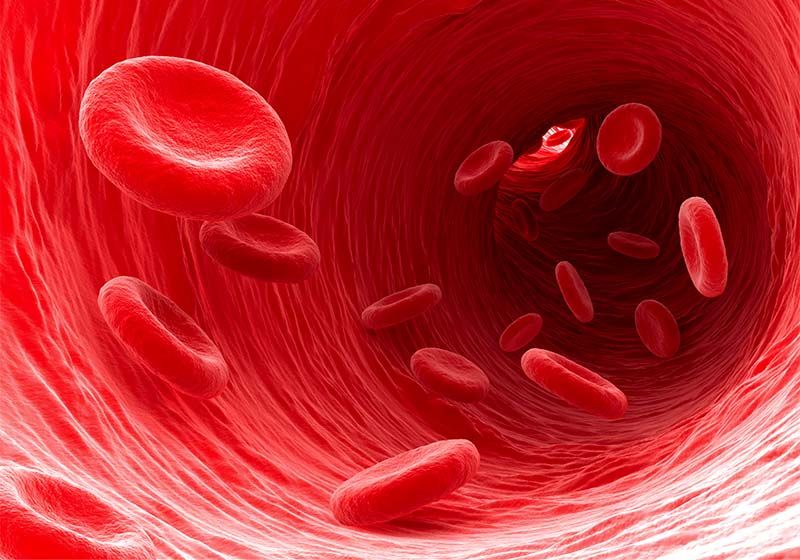SARS-CoV-2 has infected more than 200 million people around the world. For some, the symptoms of infection, including shortness of breath, muscle weakness, and fatigue, persist for months. This syndrome, called post-acute sequelae of COVID-19 (PASC) and known commonly as Long COVID, affects over a third of COVID-19 patients.
Resia Pretorius, a biologist at Stellenbosch University, Douglas Kell, a systems biologist at the University of Liverpool, and their colleagues found that inflammatory molecules remain trapped in small blood clots in people with Long COVID, which suggests that continued anti-clotting therapy may benefit these patients.
Pretorius and Kell worked on inflammatory diseases and clotting for about a decade before SARS-CoV-2 arrived. When the pandemic hit, they turned their resources to solving COVID-19-related problems and their aim soon became to solve an apparent paradox: COVID-19 complications can involve both excessive bleeding and excessive clotting.
In previous research, Pretorius, Kell, and their colleagues...
In their new paper, published in Cardiovascular Diabetology,2 the researchers looked for dysregulated molecules in blood samples that might cause the lingering shortness of breath and chronic fatigue common to patients with Long COVID. They found that the long-haulers still had the microclots that they found previously in acute COVID-19 patients.
 The researchers next used mass spectrometry-based proteomics to ascertain what molecules were in the deposits. The analysis uncovered various inflammatory molecules within the microclots, including a substantial increase in the α(2)-antiplasmin (α2AP) protein.2
The researchers next used mass spectrometry-based proteomics to ascertain what molecules were in the deposits. The analysis uncovered various inflammatory molecules within the microclots, including a substantial increase in the α(2)-antiplasmin (α2AP) protein.2
α2AP prevents the breakdown of clots; therefore, higher levels of the protein exacerbates clotting. Pretorius and Kell found that α2AP levels were nearly eight times higher in Long COVID patients than in healthy controls and more than nine times higher than in patients with acute COVID-19.
These findings may explain the chronic symptoms of Long COVID, such as breathlessness and tiredness. “The main reason for this is that the persistent microclots block entry to the microcapillaries, so blood cells can’t get in there to deliver oxygen to the lungs,” said Kell.
The formation of microclots is so central to Long COVID that Pretorius and Kell see their detection as a potential diagnostic. “Our amyloid clotting assay is simple and quick to do, and could be a useful guide for disease progression and therapeutic intervention,” said Kell. Such potential therapeutic interventions include anti-clotting therapy or blood thinners.
Jeffrey Laurence, a hematologist at Weill Cornell Medicine who was not involved in the research, indicated that that idea “is an interesting concept,” but he cautions that it is too early to be treating patients with blood thinners.
While the elevated α2AP levels that Pretorius and Kell found in blood samples from Long COVID patients are a marker of clotting, Laurence would like to see further evidence for the actual clots in tissue. In previous research, he showed that patients with severe COVID have clots in their blood vessels by taking a skin biopsy.3
Many studies have looked at clotting in COVID-19, but few have examined factors that prevent the breakdown of those clots, as Kell, Pretorius, and their colleagues have. This addition is “incredibly important,” Laurence said. “People need to think about both sides of the coin.”
References:
- E. Pretorius et al., “Prevalence of readily detected amyloid blood clots in ‘unclotted’ Type 2 Diabetes Mellitus and COVID-19 plasma: a preliminary report,” Cardiovasc Diabetol, 19(1):193, 2020.
- E. Pretorius et al, “Persistent clotting protein pathology in Long COVID/Post-Acute Sequelae of COVID-19 (Pasc) is accompanied by increased levels of antiplasmin,” Cardiovasc Diabetol, 20(1):172, 2021.
- C. Magro et al., “Complement associated microvascular injury and thrombosis in the pathogenesis of severe COVID-19 infection: A report of five cases,” Transl Res, 220:1-13, 2020.

Interested in reading more?




